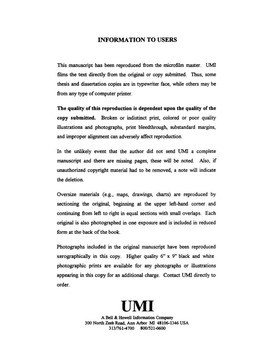| dc.contributor.advisor | Harrison, Roger G., | en_US |
| dc.contributor.author | Davis, Gregory Dean. | en_US |
| dc.date.accessioned | 2013-08-16T12:30:06Z | |
| dc.date.available | 2013-08-16T12:30:06Z | |
| dc.date.issued | 1998 | en_US |
| dc.identifier.uri | https://hdl.handle.net/11244/5665 | |
| dc.description.abstract | Using human interleukin-3 (hIL-3) as a model heterologous insoluble protein, three gene fusions were constructed that code for a native E. coli protein at the N-terminus and hIL-3 at the C-terminus. The three native E. coli proteins, NusA, GrpE, and bacterioferritin (BFR), were chosen based on their favorable cytoplasmic solubility characteristics as predicted by a statistical solubility model for recombinant proteins in E. coli. Modeling predicted the probability of soluble fusion protein expression in the following order: NusA (most soluble), GrpE, BFR, and thioredoxin (least soluble). Expression experiments showed that NusA/hIL-3 fusion protein was expressed almost completely in the soluble fraction while GrpE/hIL-3 and BFR/hIL-3 exhibited partial solubility at $\rm 37\sp\circ C.$ Thioredoxin/hIL-3 was expressed almost completely in the insoluble fraction. hIL-3 was purified to homogeneity from the NusA/hIL-3 fusion protein using an N-terminal histidine tag, factor Xa protease cleavage, and anion exchange chromatography. These results have a broad significance to the biotechnology field since insoluble heterologous protein expression in E. coli continues to be a pervasive problem in both industrial and academic research. Also, these results represent a successful example of how statistical modeling can be used to design a novel protein expression system for a specific cell type. | en_US |
| dc.format.extent | xii, 166 leaves : | en_US |
| dc.subject | Biology, Microbiology. | en_US |
| dc.subject | Gene fusion. | en_US |
| dc.subject | Engineering, Biomedical. | en_US |
| dc.subject | Escherichia coli Genetics. | en_US |
| dc.subject | Recombinant proteins. | en_US |
| dc.subject | Biology, Molecular. | en_US |
| dc.title | New fusion protein systems statistically designed to avoid inclusion body formation in Escherichia coli. | en_US |
| dc.type | Thesis | en_US |
| dc.thesis.degree | Ph.D. | en_US |
| dc.thesis.degreeDiscipline | School of Chemical, Biological and Materials Engineering | en_US |
| dc.note | Source: Dissertation Abstracts International, Volume: 59-07, Section: B, page: 3236. | en_US |
| dc.note | Adviser: Roger G. Harrison. | en_US |
| ou.identifier | (UMI)AAI9839799 | en_US |
| ou.group | College of Engineering::School of Chemical, Biological and Materials Engineering | |
